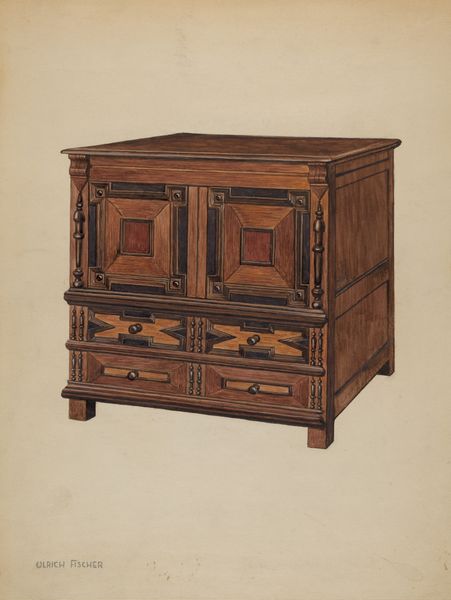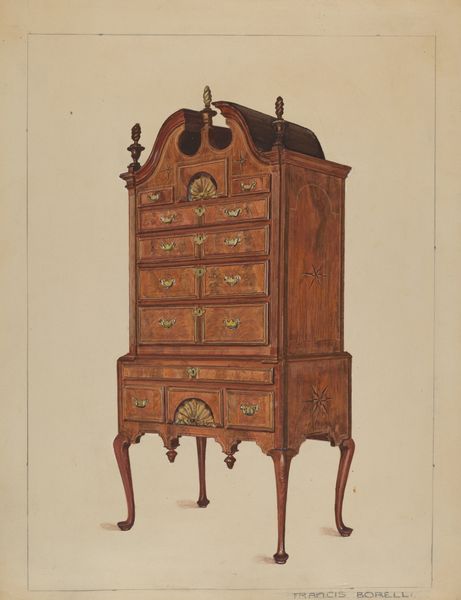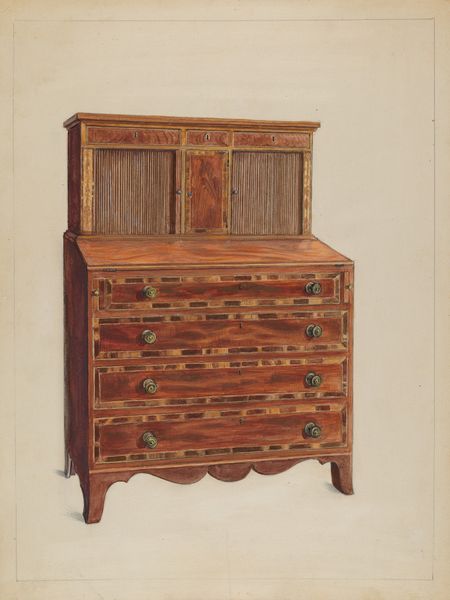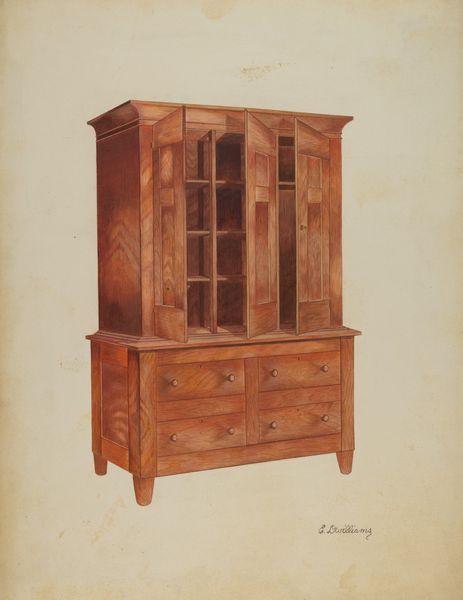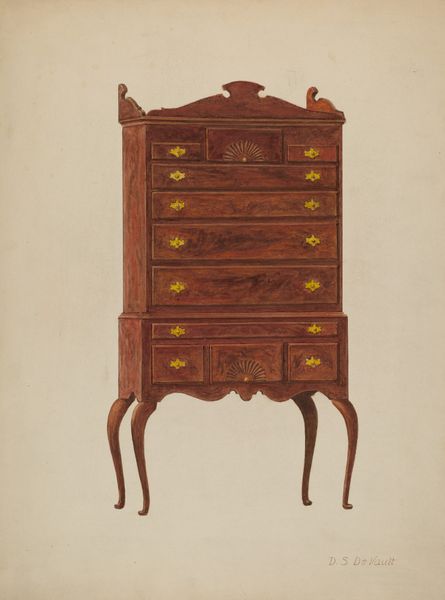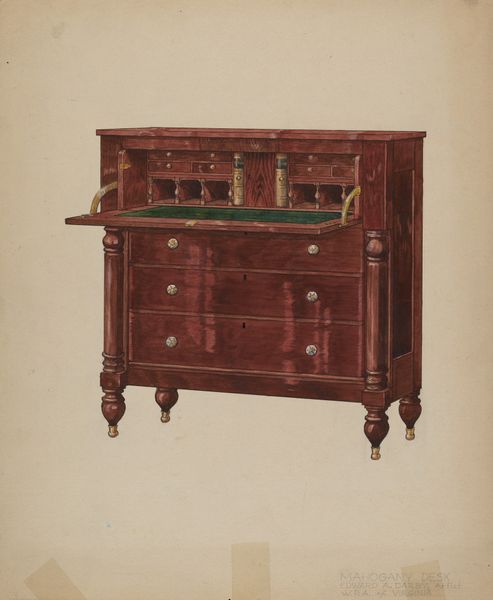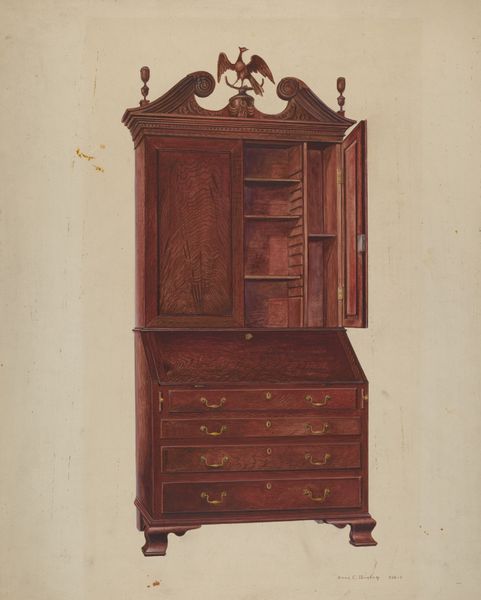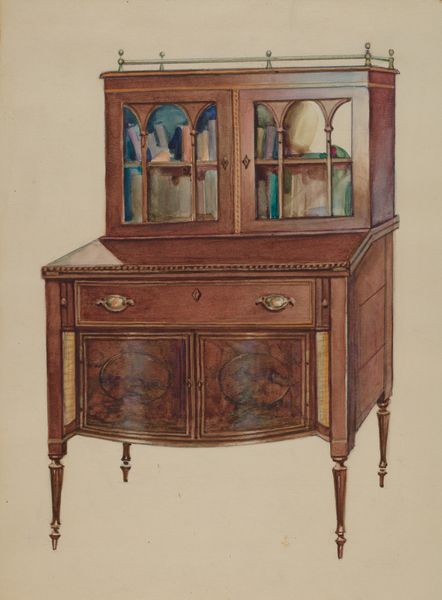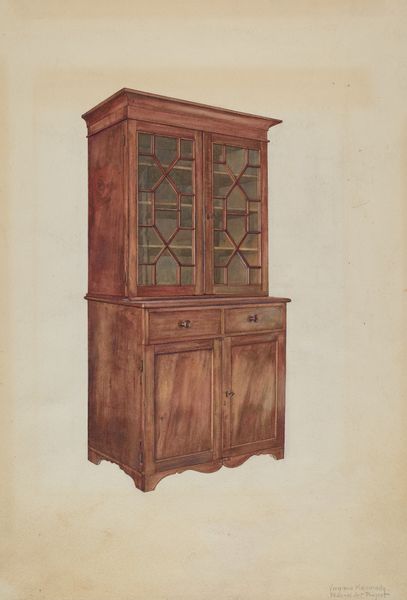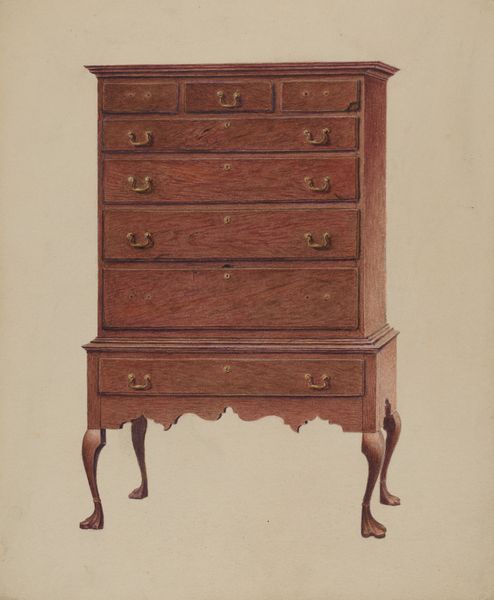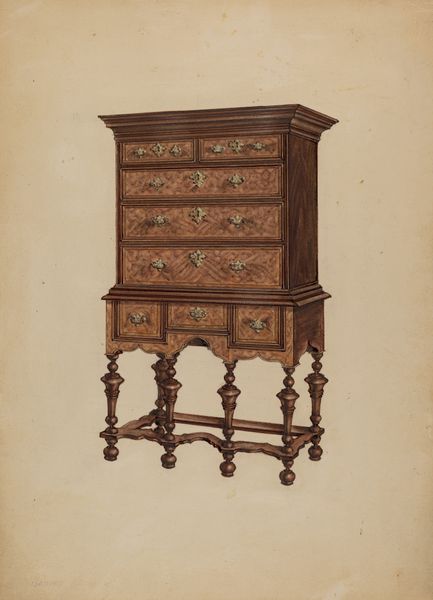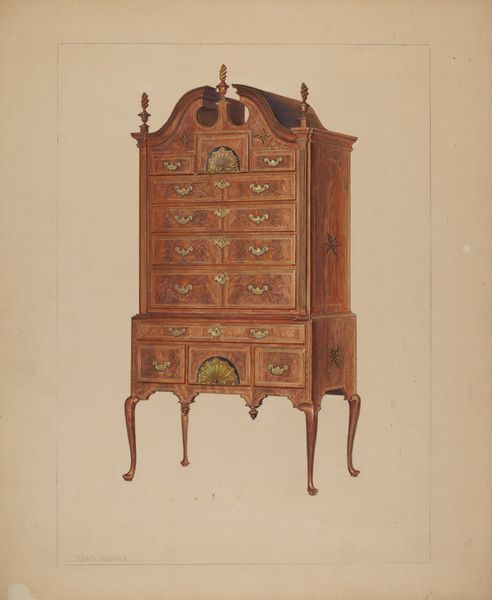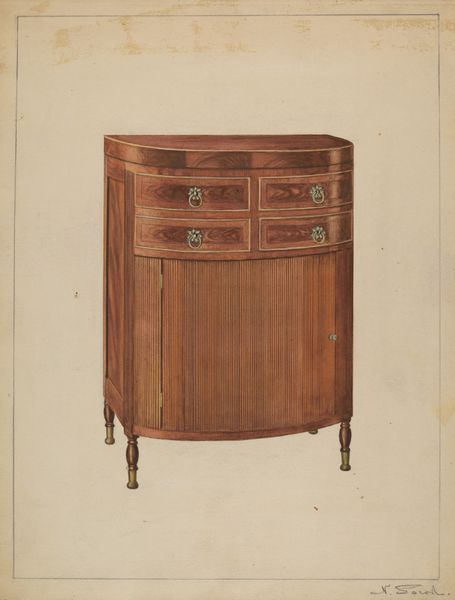
drawing, watercolor
#
beige
#
drawing
#
aged paper
#
toned paper
#
yellowing background
#
furniture
#
watercolor
#
brown and beige
#
yellow element
#
warm-toned
#
watercolour illustration
#
golden font
#
watercolor
Dimensions: overall: 29.9 x 22.9 cm (11 3/4 x 9 in.) Original IAD Object: 5'5"high; 38"wide; 18"deep at base.
Copyright: National Gallery of Art: CC0 1.0
Curator: This is "Secretary," a watercolor drawing from around 1936 by Bernard Gussow. The aged paper gives it a vintage feel, wouldn’t you agree? Editor: Absolutely, it evokes a specific time, like stepping into a perfectly preserved period room. The rendering feels precise, almost like an architectural plan. A sense of formality and perhaps even restraint permeates the piece. Curator: It’s interesting to consider furniture as a signifier of status and gender roles within the domestic sphere. What statements do you believe Gussow may have been trying to express? Editor: The very term "secretary" is loaded with implications of domesticity, of course. This isn't just a piece of furniture; it's a statement about women’s assigned role as keepers of the household and managers of the private lives of their families, their letters and keepsakes. Perhaps he is inviting us to consider those themes. Curator: Gussow, a Jewish émigré from Belarus, came to the US via Canada. His work often intersects with themes of social realism. In the context of the 1930s, and considering the prevalence of similar forms of decoration in middle class homes across America, I see an artist reflecting the cultural aspirations of a specific demographic, navigating identity in a new society and time of global economic distress. Editor: The color palette seems deliberate as well, warm tones create a nostalgic atmosphere. But do you see a potential critique? This isn’t an aspirational depiction of comfort. There's a rigidness in its precision, lacking softness or a sign of genuine use or love, so it invites analysis. Curator: Very true! The neutrality pushes for a focus on how objects reflect class aspirations during an era when owning this form of furniture marked membership in a certain cultural identity and ideal lifestyle, one centered around order and record-keeping. Editor: Gussow's composition really speaks to the socio-political realities embedded in domestic objects. It has truly changed my views. Curator: Agreed, seeing art through the lens of those it represented during particular movements, enables us to ask compelling questions around issues of identity and value, especially among newly immigrated communities during the depression.
Comments
No comments
Be the first to comment and join the conversation on the ultimate creative platform.
